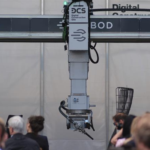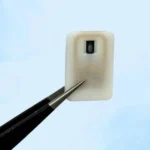While production 3D printing has certainly stepped into the limelight, the DIY and household 3D printing community is still active and growing. Some tools seem to have limitless uses, like duct tape, WD-40, and the flat head screwdriver; the desktop 3D printer has arguably earned its spot on that list. I’ve used mine to fix several objects around the house, fabricate brackets for shelving, and even make the angled braces for a wheelchair ramp. Haris Andrianakis recently used his 3D printer to repair a tachometer for a Yamaha outboard motor (for a boat).
The buttons on the device stopped working, and since Haris likes to repair rather than replace, he decided to take it apart to assess the damage. Boats operate in fairly wet environments so the tachometer is obviously sealed up tight. Thankfully, Haris has access to a lathe, allowing him to precisely cut the device open. A couple of seals had to be broken once inside to get to the circuitry for the buttons; the main circuit boards were still working just fine.
Once the buttons were removed, it became clear that the contacts on the board had corroded due to exposure to moisture that found its way into the compartment. Haris cleaned the corrosion off and then resealed the circuit board with nail varnish, which is a nifty trick. After confirming that the buttons functioned correctly again, it was time to put it all back together. This is the step that causes the most anxiety, especially considering that this device has water-tight seals. Just thinking about trying to put it back together is what leads many to just putchase a new one.
Haris deserves a lot of credit for pushing through to get this thing back together. Initially, he tried using paper and tape to make a mold that would join the face of the tachometer and the main body using epoxy resin, which would seal it nicely. The results were less than desirable. So he printed a ring on a 3D printer that would serve as the mold for the resin, which provided a more consistent finish. He still used the lathe to trim down the excess and make it smooth.
Repairing this tachometer required a lot of creativity and perseverance, so hats off to Haris for showing us how it’s done. 3D printers not only produce the objects that we think up but also help us flex our creativity muscles and think outside the box to find solutions.










